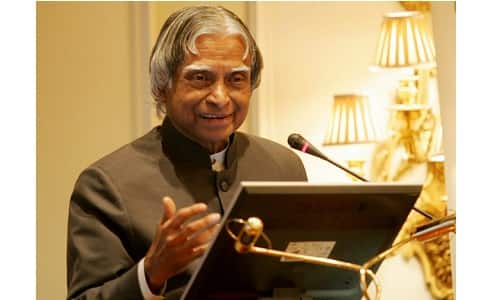Languages provide a window into the rich tapestry of civilizations around the world and are the lifeblood of human civilisation. There are 40 languages that, as of 2023, have become well-known because of their enormous speaker populations. Knowing and enjoying these top languages opens the door to understanding the rich complexity of other communities, in addition to providing a means of successful communication. These languages serve as both instruments for communication and as representations of the diverse cultures and history of the places and people where they are spoken. Unquestionably, they have a global impact that shapes many facets of our interconnected world.
Most spoken language in the world Today
| Rank | Language | Number of Speakers (Approx.) | Region |
| 1 | English | 1.452 billion | USA, UK, Australia, and many more |
| 2 | Chinese (Mandarin) | 1.118 billion | China, Taiwan, Singapore |
| 3 | Hindi | 602 million | India and Indian diaspora |
| 4 | Spanish | 534 million | Spain, Latin America, and the USA |
| 5 | Arabic | 372 million | Middle East, North Africa, and more |
| 6 | French | 300 million | France, Canada, Africa, and more |
| 7 | Bengali | 265 million | Bangladesh and Indian states |
| 8 | Russian | 258 million | Russia, former Soviet countries |
| 9 | Portuguese | 223 million | Brazil, Portugal, and more |
| 10 | Japanese | 150 million | Japan and Japanese diaspora |
1. English – 1.452 billion speakers

English has genuinely become the dominant language on the globe. The official language of business, diplomacy, and travel is now English. Although it would appear that English has always been spoken all over the world, it has it roots in England and was only ever spoken there by native speakers. English is the most widely used language in the world today, demonstrating how language is alive and continually changing.
Region: The United States, the United Kingdom, Canada, Australia, and New Zealand all use it as their primary language.
Significance: English is a global lingua franca because of its dominance in science, business, technology, and the internet. It has had a significant cultural impact through literature, film, and music.
2. Mandarin Chinese – 1.118 billion speakers

A fascinating language that has enthralled people all around the world is Mandarin Chinese. Due to its status as just one of the six official languages of the UN, Mandarin is respected even outside of these nations.
Region: China, the nation with the largest population in the world, officially speaks Mandarin. Singapore, Taiwan, and other Chinese communities across the world all speak it.
Significance: The significance of Mandarin goes beyond just how many people speak it. Mandarin has become an essential language for international trade and diplomacy as a result of China’s economic and cultural impact.
3. Hindi – 602 million speakers
Millions of people around the world are fascinated with Hindi, which has won their hearts. It has 380 million native speakers, making it one of the most extensively spoken languages and a genuinely global tongue. Hindi has a long history and is a stunning, complicated language that has its roots in northern India. It is an enthralling and intricate language with many nuances and intricacies that make learning and speaking enjoyable. Everyone must learn and value Hindi because of its rich cultural legacy and huge global significance.
Region: It is extensively used in Indian states, especially those in the north, and is the official language of India.
Significance: Hindi is a representation of India’s cultural richness as well as a language. In India’s media, politics, and entertainment, this language is very important.
4. Spanish – 534 million speakers
With more than 500 million native speakers worldwide, Spanish is a rich and lovely language. The evolution of Spanish over time is what makes it remarkable. Despite being used by a wide range of people in numerous nations, the language is nonetheless coherent and understandable to all speakers.
Region: Spanish is widely spoken throughout Latin America, including nations like Mexico, Argentina, Colombia, and more. It is also the national language of Spain.
Significance: Spanish is a vital language for cultural exchange, international trade, and communication, especially within the vibrant and diversified Hispanic world.
5. Arabic – 372 million speakers
A beautiful and sophisticated language with a long history, Arabic. It has grown to be one of the most commonly spoken languages in the world because of its distinctive alphabet and extensive history. Given that English is the official language of the UN and is spoken by millions of expats worldwide, its significance to the world community cannot be overstated.
Region: Saudi Arabia, the United Arab Emirates and Egypt are just a few of the Arab League nations where it is the official tongue.
Significance: Arabic is significant because it is the language of the Quran, which has enormous cultural and religious significance. It is essential in the study of Islam, diplomacy and business.
6. French – 300 million speakers
Millions of individuals throughout the world are interested in learning French. It has gained popularity as the second-most studied language among those looking to expand their cultural horizons or advance their careers. Learning French has several advantages, from enhancing cognitive abilities to creating new business and travel prospects.
Region: Several African countries, including Morocco, Algeria, and Senegal, as well as France, Canada, and Canada all have it as their official language.
Significance: French is significant because of its rich cultural past and its contributions to philosophy, literature, and the arts. Additionally, it’s a crucial language in global diplomacy.
7. Bengali – 265 million speakers
One of the most extensively spoken languages in Bangladesh and India is Bengali, also referred to as Bangla. Bengali has been acknowledged as one of India’s 23 official languages in addition to being the official language of Bangladesh. The language is renowned for its complex writing system, which makes use of a special alphabet and has been named a World Cultural Heritage Site by UNESCO.
Region: The Indian subcontinent has a considerable cultural presence in this language, which is also the official tongue of Bangladesh.
Significance: Bengali is recognized for its literary achievements, particularly works by Nobel Prize winner author Rabindranath Tagore.
8. Russian – 258 million speakers
The intriguing history of the Russian language spans many centuries. Understanding the language is essential to properly appreciating the beauty and richness of Russia’s creative output, which spans music, literature, film, and the arts. Russia continues to be a cultural powerhouse.
Region: Several former Soviet countries use it, and it is the main language of Russia.
Significance: Russian is essential for research in space exploration, science, and literature. Additionally, it is a language with important geopolitical and historical implications.
9. Portuguese – 223 million speakers
Portuguese is a lovely, rich language that is widely spoken in many parts of the globe. Portuguese culture has a unique identity that is created by its language, whether it be the sensual rhythms of Brazilian samba or the lyrical harmonies of Portuguese fado. Portuguese has influenced worldwide cultural trends in everything from literature to music, and it is still a powerful voice in shaping international discourse.
Region: It is spoken in many other nations, including Mozambique and Angola, and is the official language of Brazil and Portugal.
Significance: Portuguese is a widely spoken language that is recognized for its musical styles like bossa nova and fado as well as its importance in world trade.
10. Japanese – 150 million speakers
The native speakers of the Japanese language have been using it for many years. People from all over the world have been entranced by its distinctive sound and writing method. Knowing that the language started in the Japanese archipelago and has changed over time with influences from Korean, Chinese, and Dutch languages is interesting.
Region: Japan’s official language is spoken by Japanese communities all over the world.
Significance: The distinctive culture, writing system, and technical advancements of Japan are well known. It is an artistic and precise language that has an impact on industries like technology and anime.
Conclusion
The most widely spoken languages in 2023 stand as the linguistic foundation of our globalized society. They make it easier to communicate, cross cultural divides, and recognize the wonderful tapestry of human variation. These languages are not just the meaning of communication but also bearers of culture, history, and identity, from the ubiquitous use of Mandarin Chinese to the cultural acuity of languages like Spanish, Arabic, and French. Understanding and respecting different languages is crucial for creating unity in variety and appreciating the beauty of our diversified globe as we continue to embrace a worldwide world.

Rahul Kumar is a passionate educator, writer, and subject matter expert in the field of education and professional development. As an author on CoursesXpert, Rahul Kumar’s articles cover a wide range of topics, from various courses, educational and career guidance.



